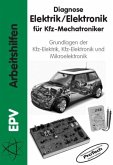The use of electronics in automotive and avionic industries accounts for a large number of essential improvements for safety, fuel economy, comfort, and system costs. However, during the last few years, the development of effective diagnostic strategies has lagged behind the recent increase of electronic systems in modern transportation. Thus, to address these critical industry demands for improved diagnostic strategies, a diagnostic framework as part of an integrated architecture was developed, which is introduced in this book. Following a maintenance-oriented fault model, each experienced failure is classified with respect to the field replaceable units and stops the recursion of the fault-error-failure chain at a level suitable for maintenance. The key strategy presented in this book is the operation on the distributed state of the system in order to discriminate between different types of faults that are affecting the system. For the transport of diagnostic information, an encapsulated virtual network on top of time-triggered communication system is established to prevent any effect on the real-time traffic. This book is written for automotive and avionic system engineers.








